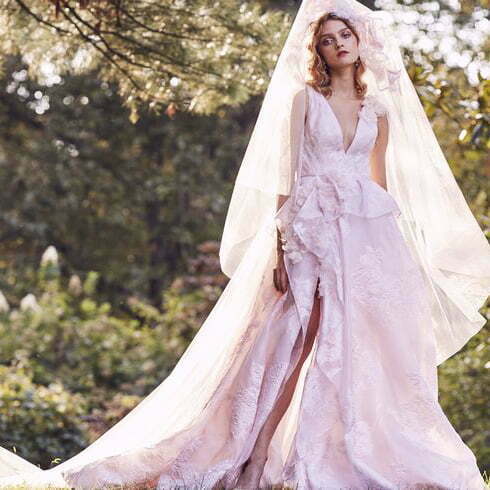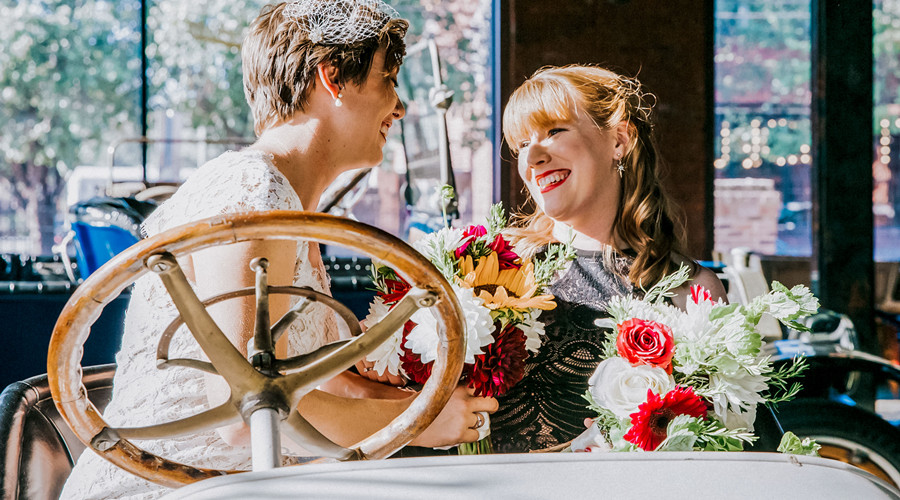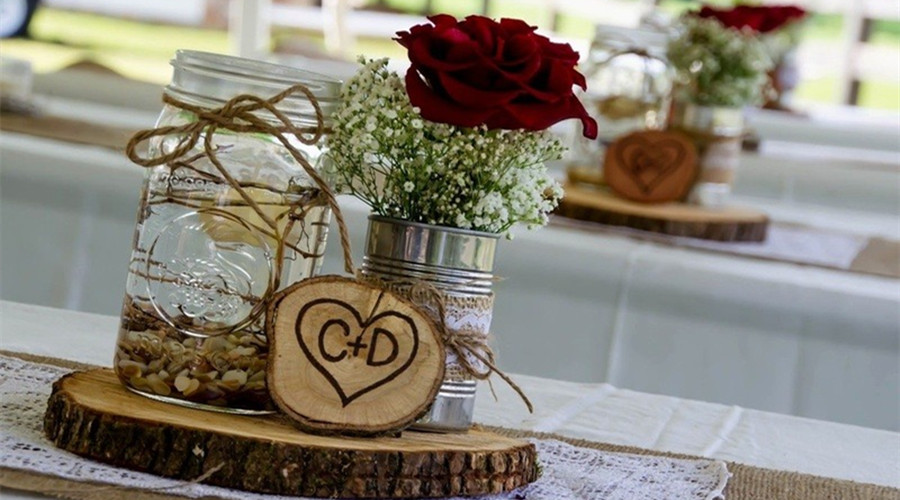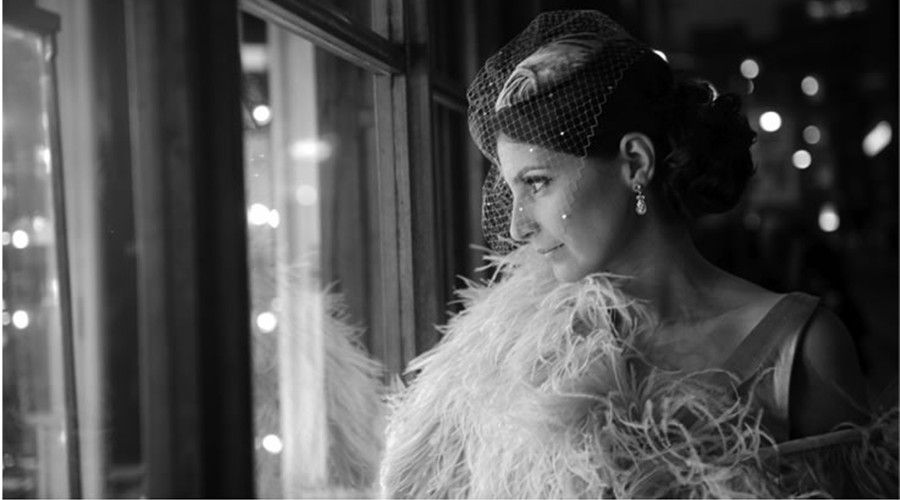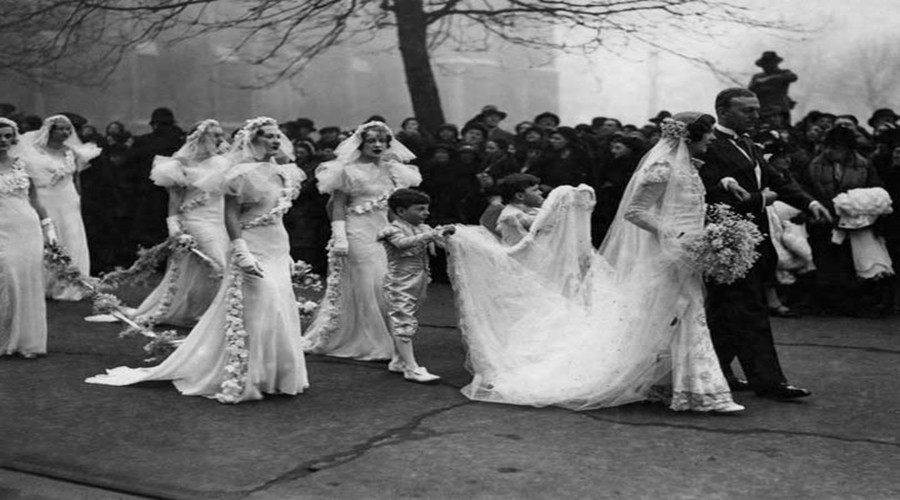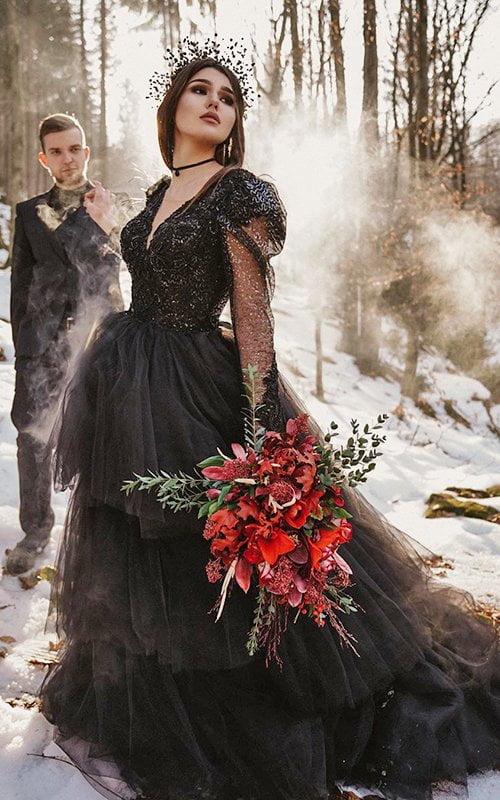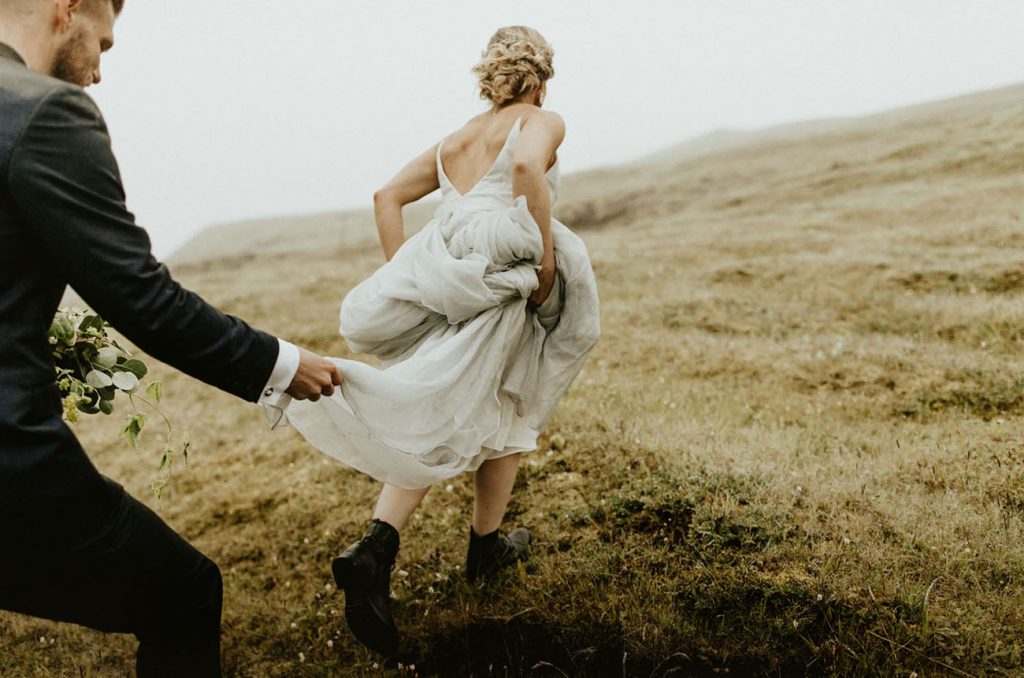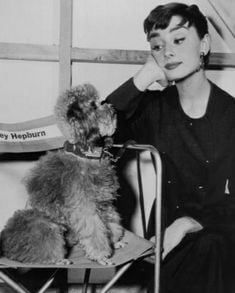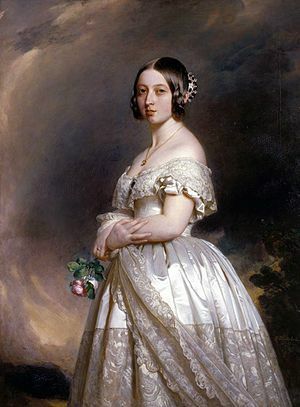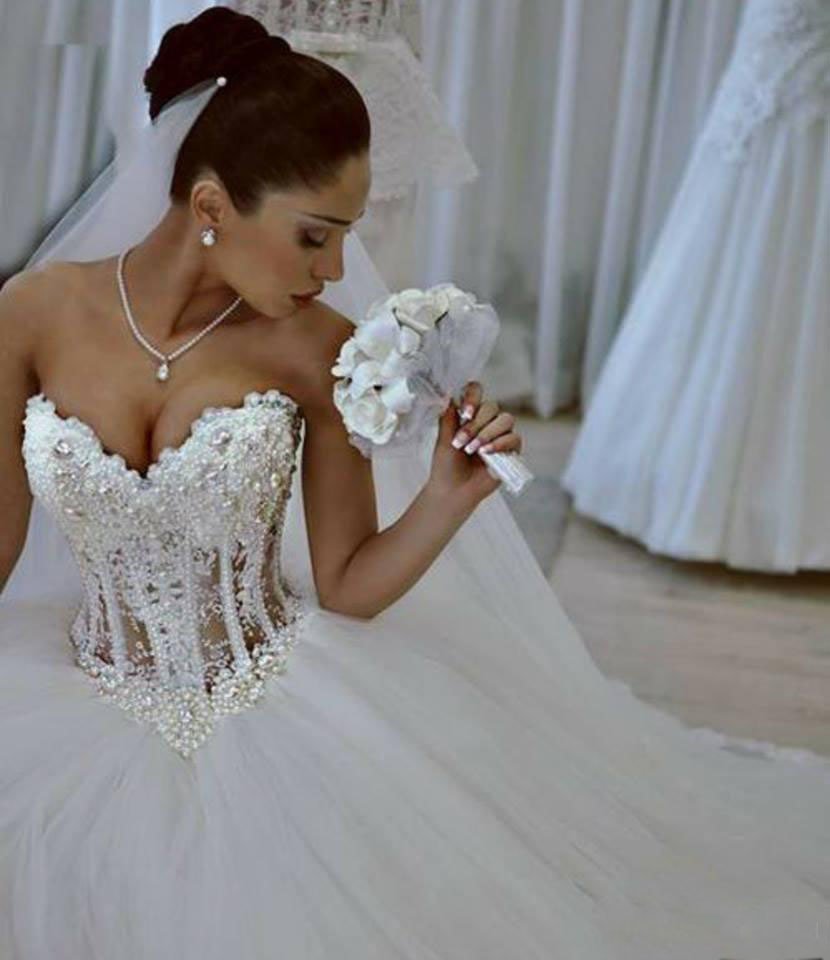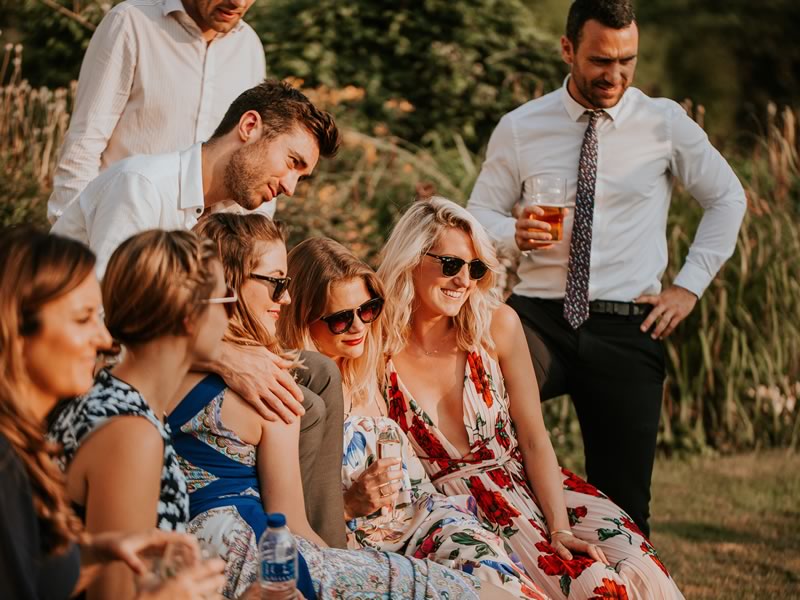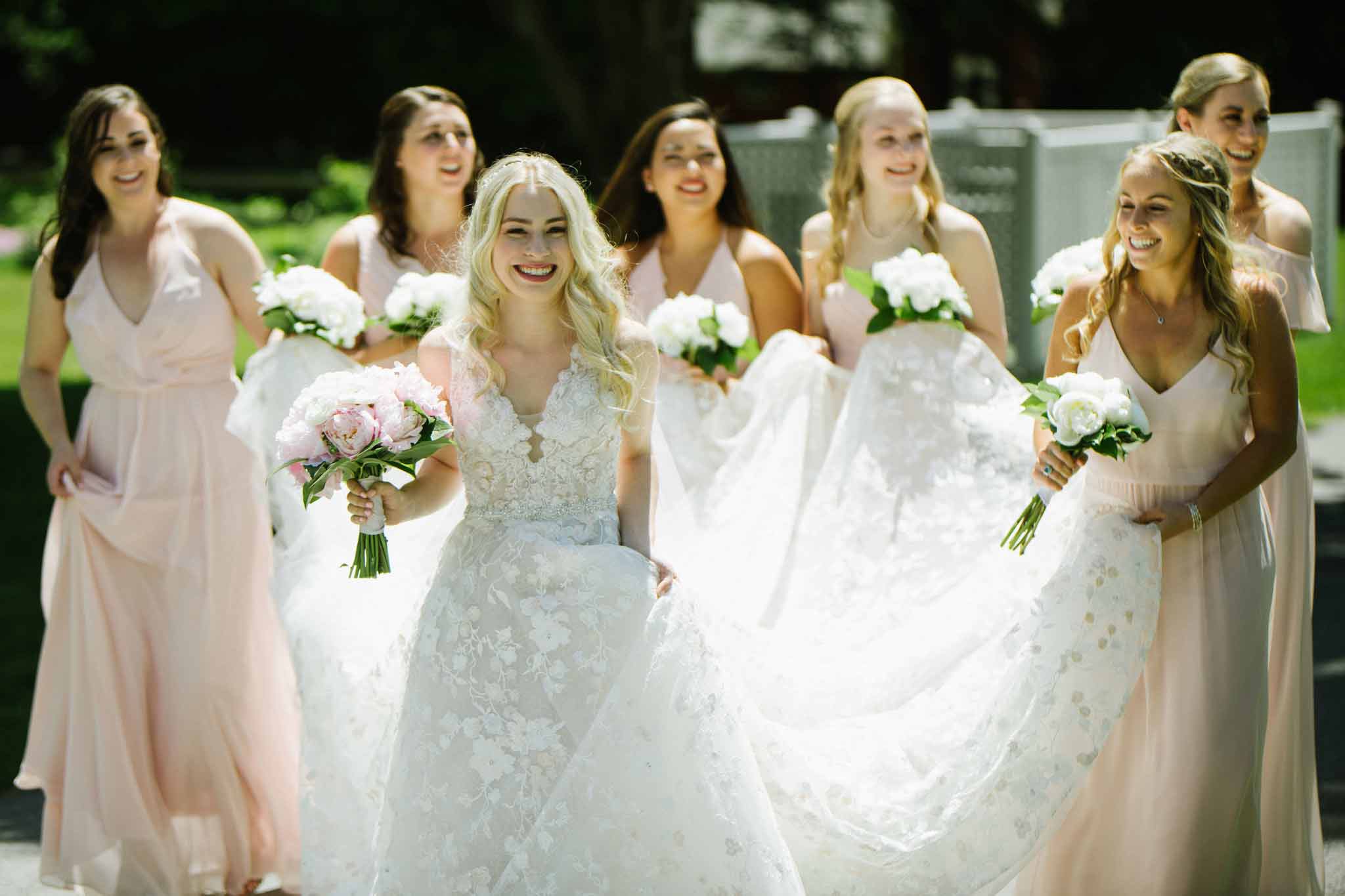
As we just stepped into a new decade, we thought it’d be pretty fitting if we gave you recap of the evolution of wedding dress in, not the past decade, but the past century! Wedding fashion changes pretty rapidly in our modern fashion industry, but that wasn’t the case back in the day. Every decade had its own distinctive wedding fashion which prevailed through the ten years. Read on to find out the main features of the wedding fashion from the 1920s to the 2010s to really see how wedding fashion has evolved in these 100 years.
1. The 1920s
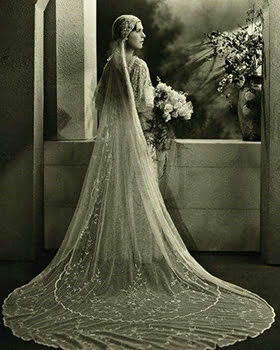 The ideal 1920s wedding dress was incomplete without lace details and silver or gold embellishments on the bodice. Drop waists and cathedral length veils were also significant features in the wedding fashion of 1920s. Add some fun fringes, a cloche hat, and some ivory hues and the look is completed with the jazz and Gatsby vibe of the decade.
The ideal 1920s wedding dress was incomplete without lace details and silver or gold embellishments on the bodice. Drop waists and cathedral length veils were also significant features in the wedding fashion of 1920s. Add some fun fringes, a cloche hat, and some ivory hues and the look is completed with the jazz and Gatsby vibe of the decade.
2. The 1930s
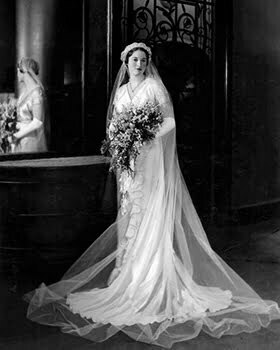 When it came to wedding fashion, the 30s turned out to be much more sleek and flowy. Most wedding dresses had a luxurious trail and the most expensive ones featured the iconic, oversized, ruffled sleeves. The main features of the ideal 30s wedding dress were floor-length skirts, full-length fitted sleeves, tulle floor-length veils, and a tiara style headdress.
When it came to wedding fashion, the 30s turned out to be much more sleek and flowy. Most wedding dresses had a luxurious trail and the most expensive ones featured the iconic, oversized, ruffled sleeves. The main features of the ideal 30s wedding dress were floor-length skirts, full-length fitted sleeves, tulle floor-length veils, and a tiara style headdress.
3. The 1940s
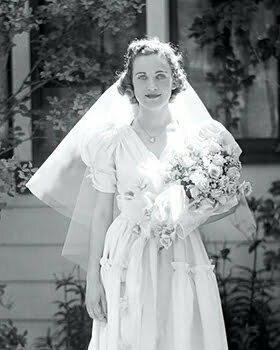 Due to the unavailability of silk, satin, tulle, and lace after the war, the wedding dresses of the 40s were much simpler than before. Instead, rayon satin, crepe, and taffeta became more popular, especially in shades of rose pink. The sleeves stayed long as the dress featured sweetheart necklines, a fitted bodice, and puffy shoulders to create an altogether youthful and feminine look.
Due to the unavailability of silk, satin, tulle, and lace after the war, the wedding dresses of the 40s were much simpler than before. Instead, rayon satin, crepe, and taffeta became more popular, especially in shades of rose pink. The sleeves stayed long as the dress featured sweetheart necklines, a fitted bodice, and puffy shoulders to create an altogether youthful and feminine look.
4. The 1950s
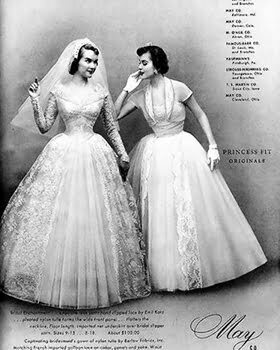 With the debut of Christian Dior’s “New Look”, the perfect hourglass figure was all the rage. A sweetheart neckline and the smallest waist accompanied the full and flowing circle skirt which took up quite a bit of fabric. Lace and silk were common while removable layers became a trend during the mid 50s, such as bolero jackets or cropped blazers on top of strapless dresses. Find out more about the 1950s wedding dresses style here.
With the debut of Christian Dior’s “New Look”, the perfect hourglass figure was all the rage. A sweetheart neckline and the smallest waist accompanied the full and flowing circle skirt which took up quite a bit of fabric. Lace and silk were common while removable layers became a trend during the mid 50s, such as bolero jackets or cropped blazers on top of strapless dresses. Find out more about the 1950s wedding dresses style here.
5. The 1960s
 As wedding fashion progressed faster and faster, there came a modern and minimalistic phase in the 1960s. The lacy details of the 50s were no longer there, and neither were the intricate gold embellishments on the bodice from the 40s. Column wedding dresses with belts cinching at the waist, mod silhouettes, and long flowy veils were the fresh new trend now.
As wedding fashion progressed faster and faster, there came a modern and minimalistic phase in the 1960s. The lacy details of the 50s were no longer there, and neither were the intricate gold embellishments on the bodice from the 40s. Column wedding dresses with belts cinching at the waist, mod silhouettes, and long flowy veils were the fresh new trend now.
6. The 1970s
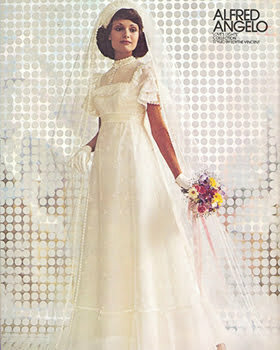 As the 70s was the decade of the hippies, free-spirited brides were seen walking down the aisle barefooted and with flowers adorning their hair. The influence of DJ showed up in form of dramatic white hats and full-length puffy sleeves. For the ones who preferred a conventional style, pearls decorated the high necks and high waisted sophisticated dresses. Learn the fashion of the 1970s wedding dresses here.
As the 70s was the decade of the hippies, free-spirited brides were seen walking down the aisle barefooted and with flowers adorning their hair. The influence of DJ showed up in form of dramatic white hats and full-length puffy sleeves. For the ones who preferred a conventional style, pearls decorated the high necks and high waisted sophisticated dresses. Learn the fashion of the 1970s wedding dresses here.
7. The 1980s
 The era of rockstars and soap operas, it’s safe to say that the 80s wedding fashion had a bold and glammed up look. The long, puffed sleeves and high necks of the 70s stayed, but were updated with intricate and luxurious lace details. Veils were ditched momentarily, as brides crowned their heads with glimmering silver and white jewels.
The era of rockstars and soap operas, it’s safe to say that the 80s wedding fashion had a bold and glammed up look. The long, puffed sleeves and high necks of the 70s stayed, but were updated with intricate and luxurious lace details. Veils were ditched momentarily, as brides crowned their heads with glimmering silver and white jewels.
8. The 1990s
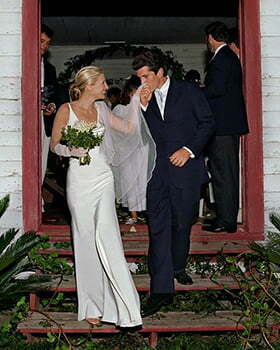 By the time the 90s had arrived, most of the brides no longer had any interest in intricate embellishments and luxurious details as the trendiest of wedding dresses turned out to be sleek and simple. A silky, sexy sheath gown became a go-to.
By the time the 90s had arrived, most of the brides no longer had any interest in intricate embellishments and luxurious details as the trendiest of wedding dresses turned out to be sleek and simple. A silky, sexy sheath gown became a go-to.
9. The 2000s
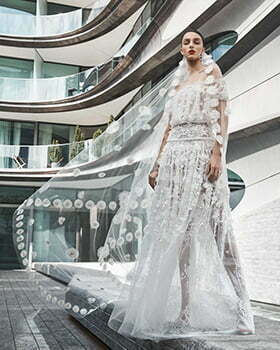 When we think of the best wedding dresses of the 2000s, all of them are strapless and well fitted at the waist. Silk or satin bodices morphing into tulle skirts trailing behind the bride created a royal effect and were a wonderful throwback to the 50s.
When we think of the best wedding dresses of the 2000s, all of them are strapless and well fitted at the waist. Silk or satin bodices morphing into tulle skirts trailing behind the bride created a royal effect and were a wonderful throwback to the 50s.
10. The 2010s
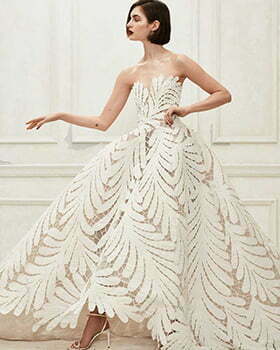 Since the 2010s begun, fashion trends moved so rapidly that it would be impossible to describe one distinctive wedding dress for the entire decade. However, we would say that most brides did experiment with unconventional and unique styles much more than they did before. The bridal jumpsuit came into being along with much short lengths when it came to wedding dresses.
Since the 2010s begun, fashion trends moved so rapidly that it would be impossible to describe one distinctive wedding dress for the entire decade. However, we would say that most brides did experiment with unconventional and unique styles much more than they did before. The bridal jumpsuit came into being along with much short lengths when it came to wedding dresses.
Although wedding fashion is ever-changing, even more quickly in modern days, it’s only a fact that the classic traces of vintage wedding fashion are still found on today’s bridal week runways. Wedding fashion will keep evolving for the better while taking inspiration from some old and forgotten trends, so here’s to hoping that the 2020s bring us some wonderful, for example, hen do ideas are great for the wedding party in the modern wedding fashion ideas, and more groundbreaking wedding fashion trends like this to rock soon.

